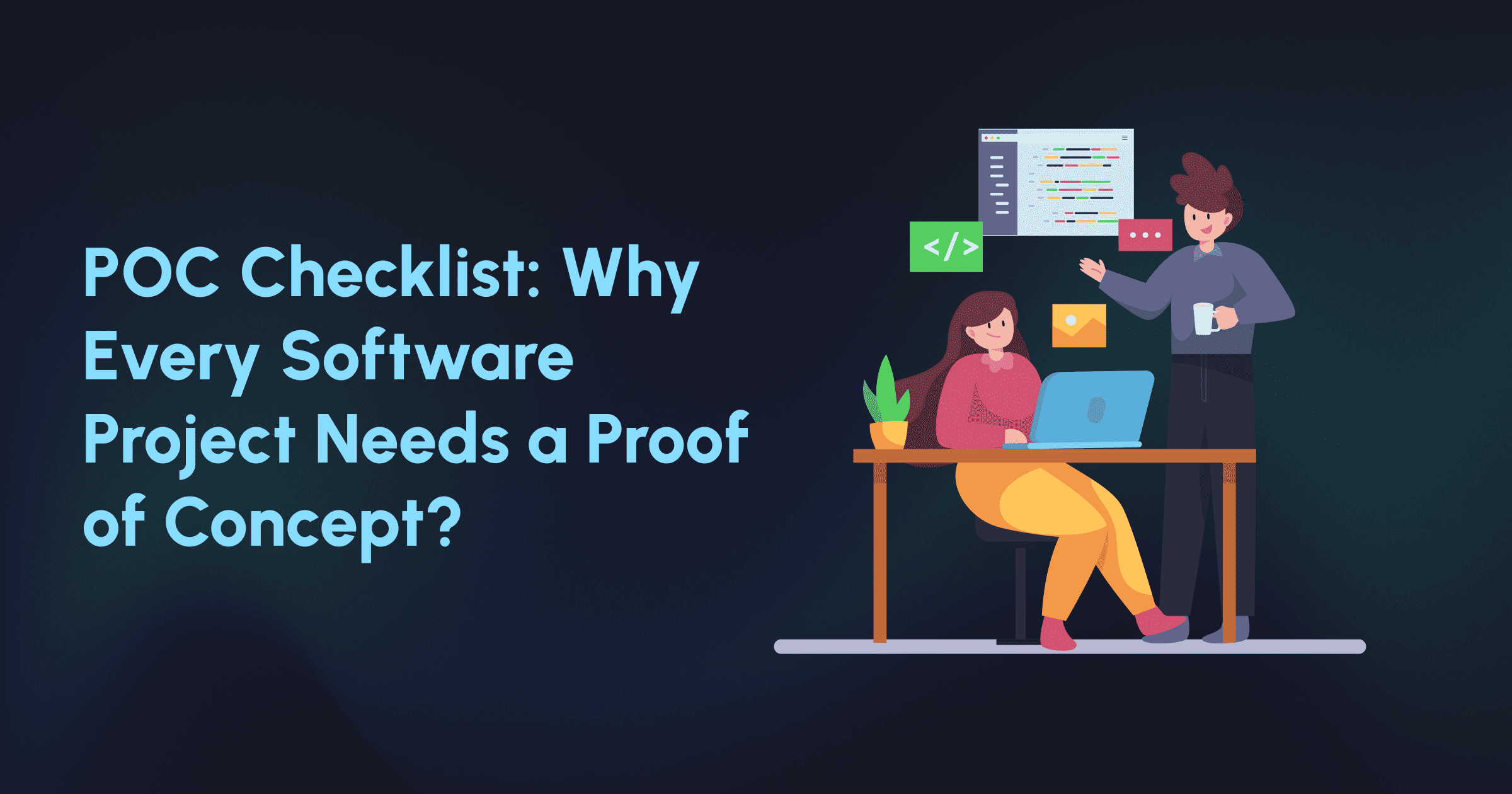The software development process involves many moving parts, from brainstorming ideas to coding and finally launching a product. Yet one crucial step is often overlooked: validating whether your idea is feasible before committing significant time and resources.
Think of it like learning to trade stocks for the first time. Before jumping into live trading, you study how the market behaves, practice with simulations, or test strategies on a small scale. Skipping these steps could lead to unexpected setbacks or missed opportunities. Similarly, in software development, diving straight into building without validating your concept can waste time, introduce unforeseen risks, and even jeopardize the project.
This is where a Proof of Concept comes in. A POC allows startups and established companies alike to test ideas in a controlled, low-risk way, validating technology feasibility, market fit, and overall viability, all before committing to full-scale development.
In this blog, we’re putting the POC in the spotlight, a common approach for teams planning an MVP or adding new features to an existing product. Let’s break down what a PoC is in software development and explore its role in the process.
What Is POC in Software Development?
We’ve talked about why testing matters earlier; now, let’s see what a POC actually looks like in action.
In software development, a POC is essentially a small, focused experiment designed to test whether your software idea can work in the real world. Unlike a full product, it usually targets the most critical features or the riskiest parts of your concept. The goal is to build the entire solution and to answer the key question: “Can this idea actually work?” before committing significant time and resources.
If you’re a founder or managing your product team, a software development POC is more than just a technical check; it helps to ensure that your idea:
- Targets real user problems.
- Can be implemented using existing technologies.
- Avoids potential roadblocks that could derail the project.
Download Proof of Concept Checklist now
Want an easy way to keep track of all your POC steps? Take the guesswork out of your idea with our POC Checklist.
Running Your POC: A Step-by-Step Guide
Want an easy way to keep track of all your POC steps? Take the guesswork out of your idea with our free POC Checklist.
1. Start With One Defining Question
Running a POC starts with defining the single most important question your experiment needs to answer. For example, see whether a new AI feature can handle real user data efficiently or if a workflow can integrate smoothly with existing systems. By focusing on this core question, you test the riskiest part of your idea first and gain insights that directly inform your next steps.
2. Focus on the Riskiest Feature First
Identify the feature that could make or break your project. Test the riskiest areas first to avoid costly mistakes and gain the most valuable insights.
3. Keep Technology and Resources Lean
Choose only the tools, platforms, and team members necessary to validate your assumptions. The goal is to test feasibility efficiently, not to replicate your full-scale product, which means using minimal resources to answer your critical questions and keep costs under control.
4. Build a Lightweight Prototype
Create a simplified version of your solution that allows for testing, learning, and iterating. A small web app, a single-feature demo, or a workflow simulation is often enough to uncover issues and gather insights early. Remember, the POC is about learning fast, not building a polished product.
5. Test and Gather Feedback
Run your POC with a small, controlled audience. Collect quantitative data like performance, speed, and reliability, alongside qualitative feedback such as user experience and satisfaction. These insights help founders make strategic decisions and prioritize improvements before committing to full development.
6. Analyze Results And Move Forward
Take insights from your POC and let them guide your next move. Even a partially successful POC reveals risks early, saves time and money, and provides actionable insights to make smarter decisions.

Use Case: Proving a Big Idea with a POC
When tackling a complex problem, the challenge is knowing if it will actually work. Canva wanted to make design accessible for everyone, not just professionals. Launching a full platform without testing would have been a risky move.
Instead, they started small with a Proof of Concept (POC): Fusion Books, a tool that let schools create and print yearbooks online. This early test revealed what users truly needed, which features mattered most, and where friction existed. The response validated the core idea and provided clear insights for the next stage.
From this small, practical POC, Canva scaled confidently, building a product that millions now use daily.
In short, you don’t need to validate everything at once. Start small, focus on the riskiest assumptions, and use the insights to guide your next steps. That’s how you move from possibility to proof, and from proof to scale.
Want to test your idea the smart way?
Let Absolute App Labs help you test, validate, and launch your next big product.
Conclusion
Ideas are everywhere, but execution is everything. What sets winning products apart is proof, and a POC delivers that proof before you make a significant investment. In fact, studies show that 70–88% of digital transformation projects fail without upfront validation, while teams using POCs see a 30–50% higher success rate.
Every test you run today builds the roadmap for a stronger, smarter product tomorrow. If your vision is to build a product that truly meets user needs, a POC ensures you’re on the right track from day one.
Curious to see how your idea could turn into a validated, scalable product? Connect with Absolute App Labs today and get your POC started.
